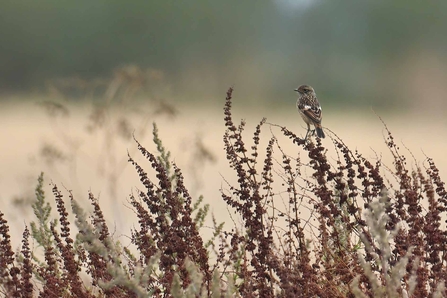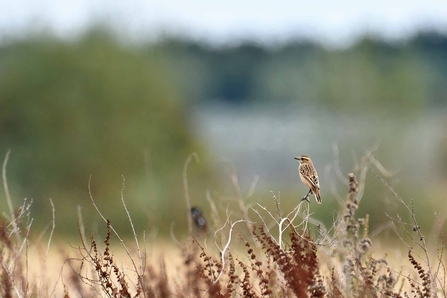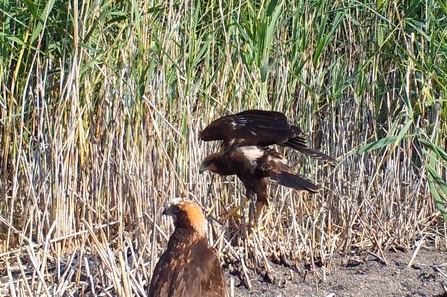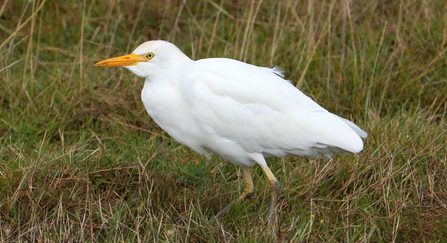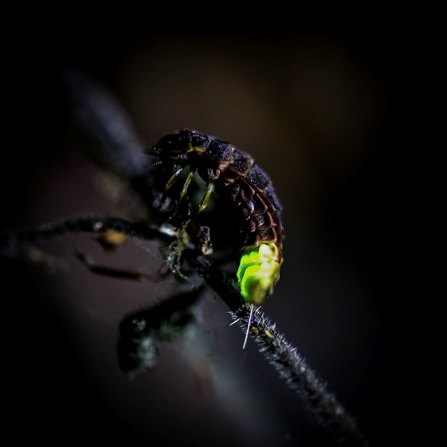This month we celebrated World Bird Migration Day, and so it seems an appropriate time to update you on an exceptional year, especially when it comes to wildlife on the move in the Great Fen!
Our study of stonechats has benefited from the best ever breeding year in the Great Fen, with several pairs of birds rearing many young, at multiple locations! It’s been such a good year for this species, this success won’t be just confined to the Great Fen, but still, it’s a significant step forward in the colonisation of the new land we are managing for wildlife. So this is something worth celebrating in terms of Great Fen conservation achievements, and also our stonechat research project itself, which was in the right place at the right time to benefit from this dramatic increase in the breeding population; we have now been able to track the movements of not just wintering birds, but also breeding birds and their young.

